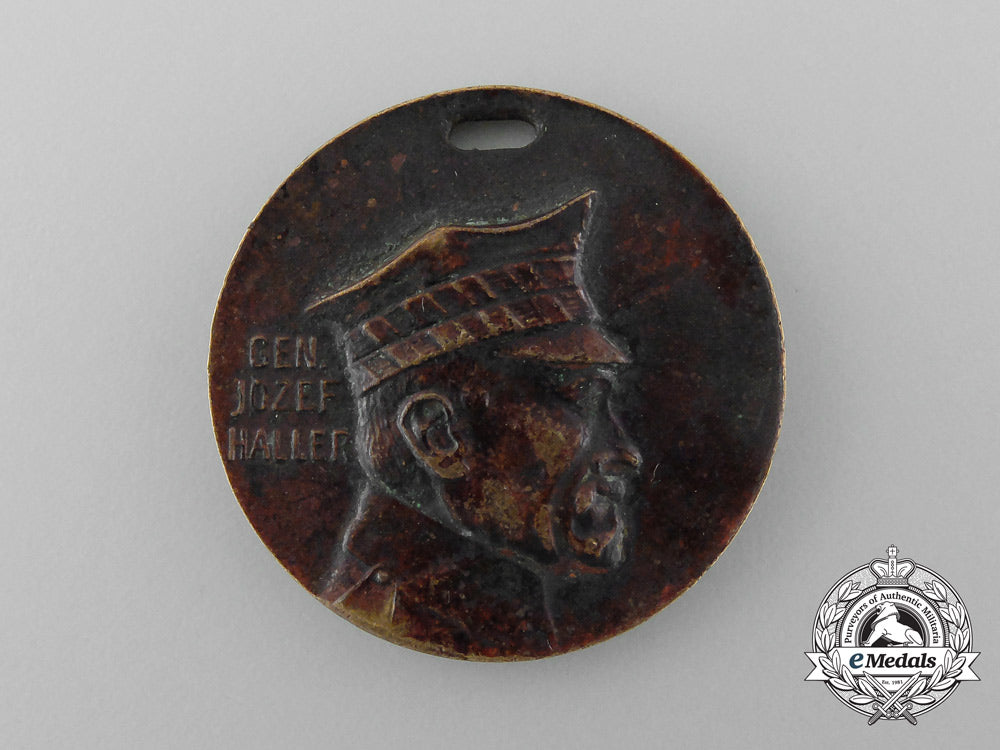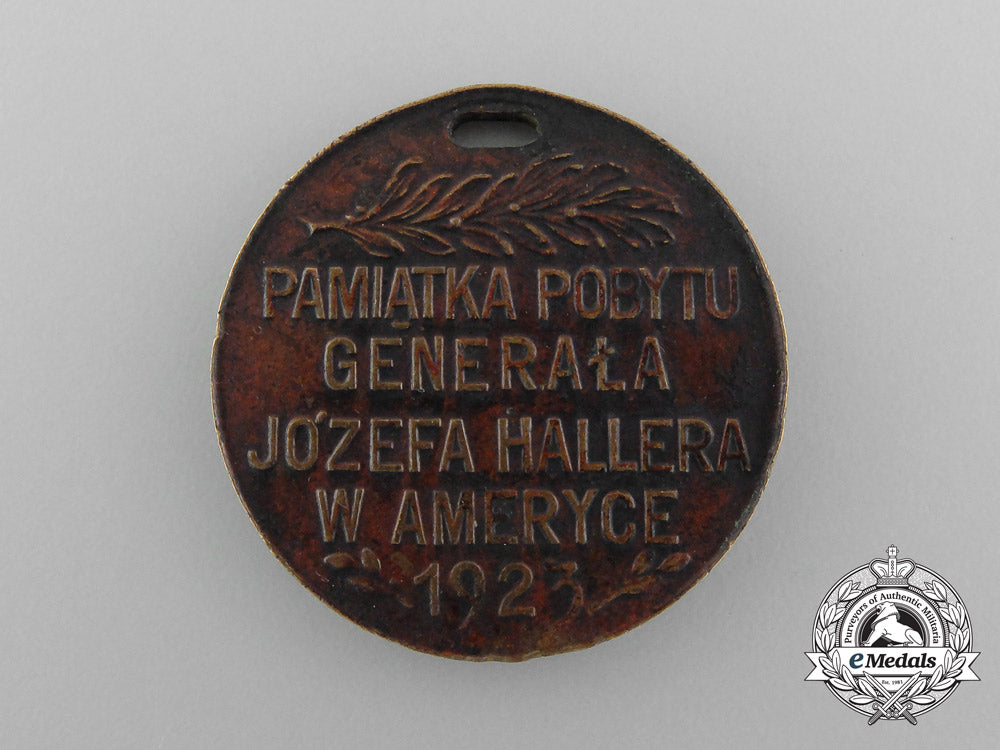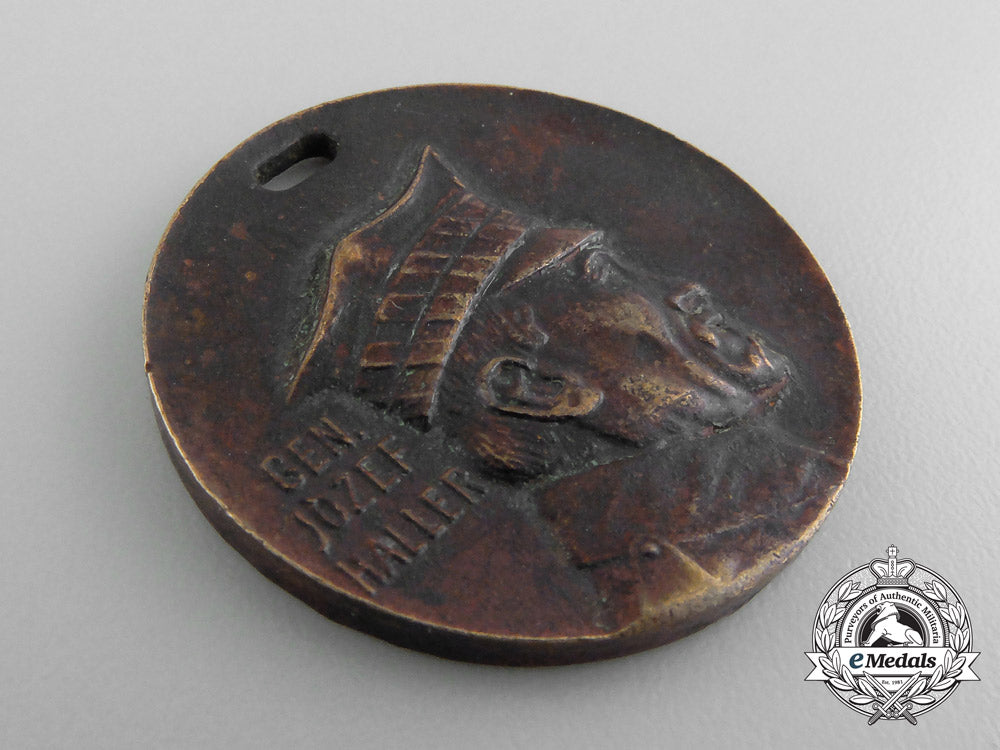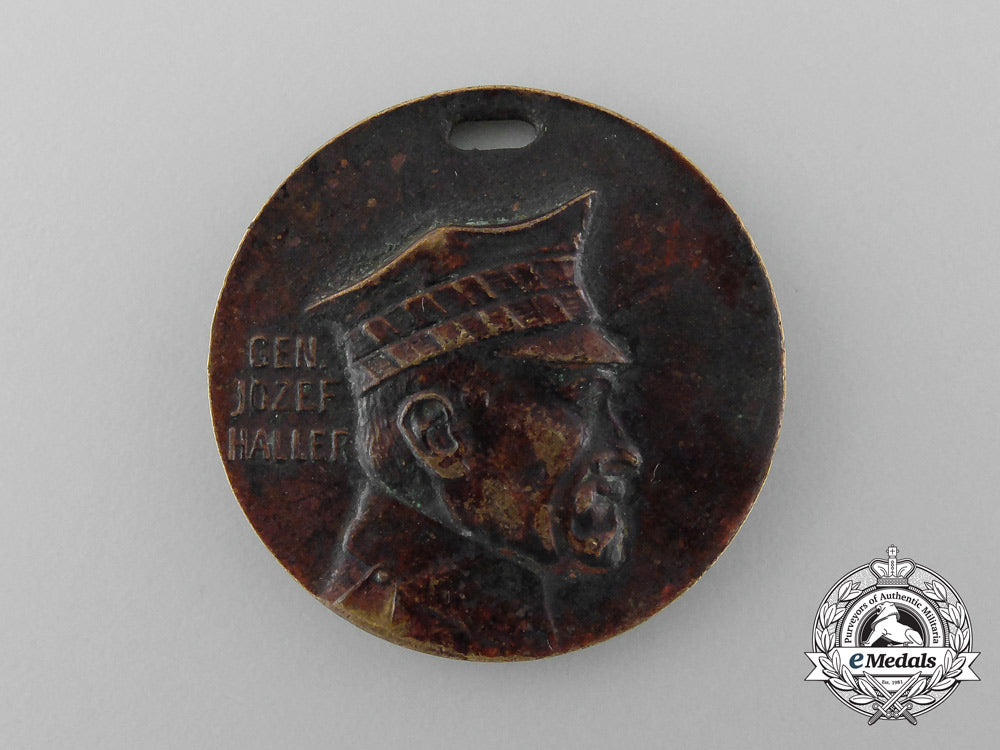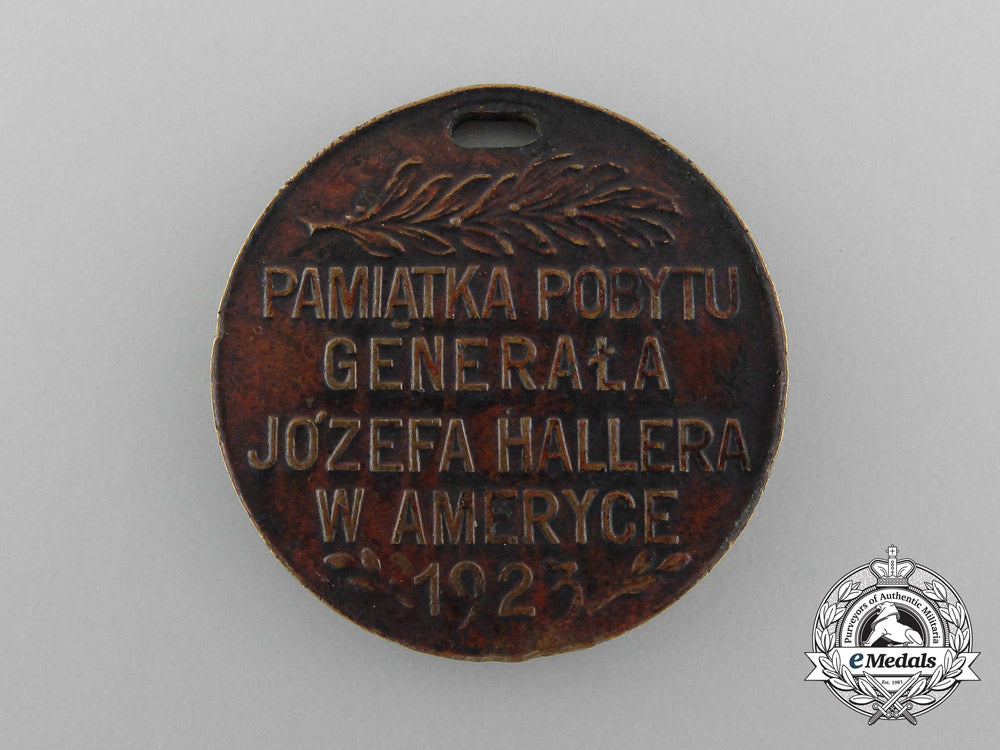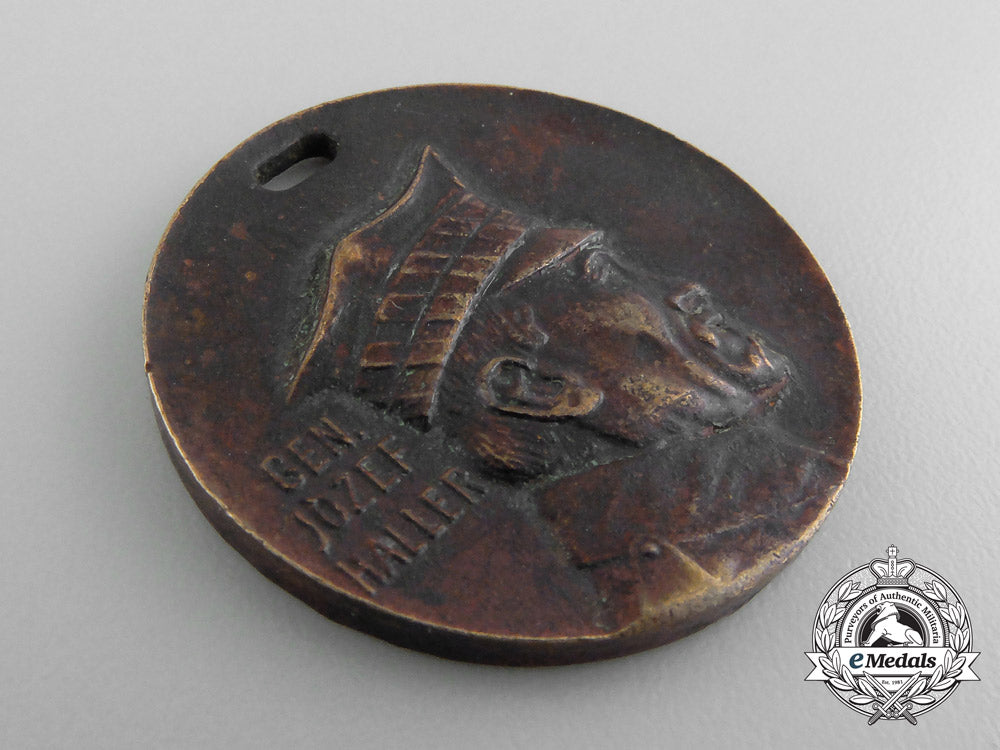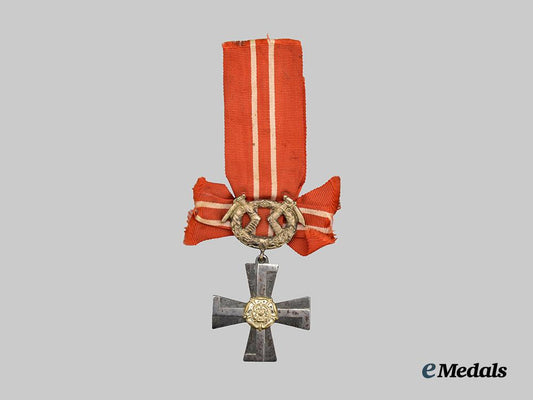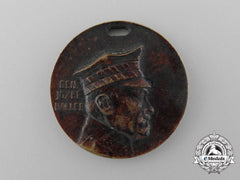
LOADING ...
In response to evolving domestic opinion, eMedals Inc has made the conscious decision to remove the presentation of German Third Reich historical artifacts from our online catalogue. For three decades, eMedals Inc has made an effort to preserve history in all its forms. As historians and researchers, we have managed sensitive articles and materials with the greatest of care and respect for their past and present social context. We acknowledge the growing sentiments put forth by the Canadian public and have taken proactive actions to address this opinion.
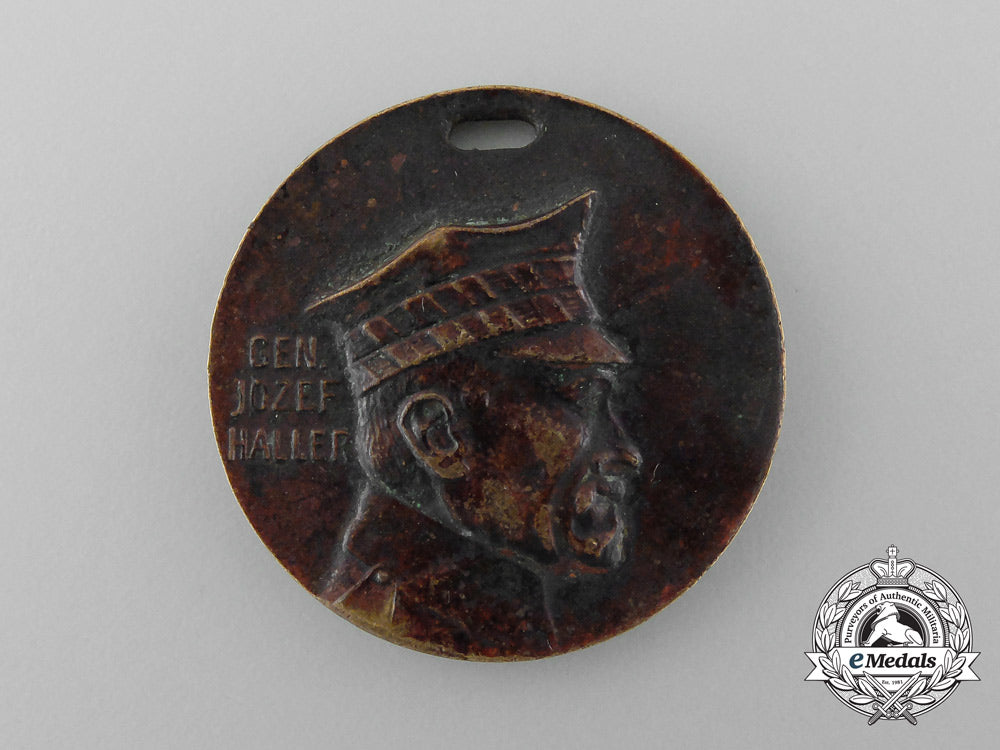
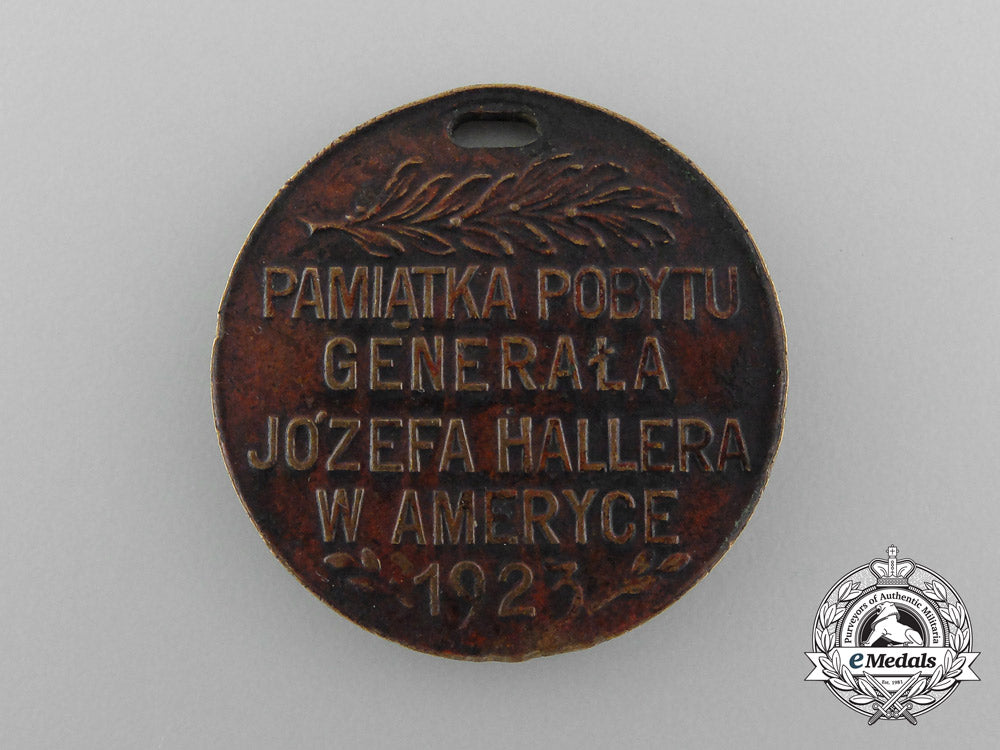
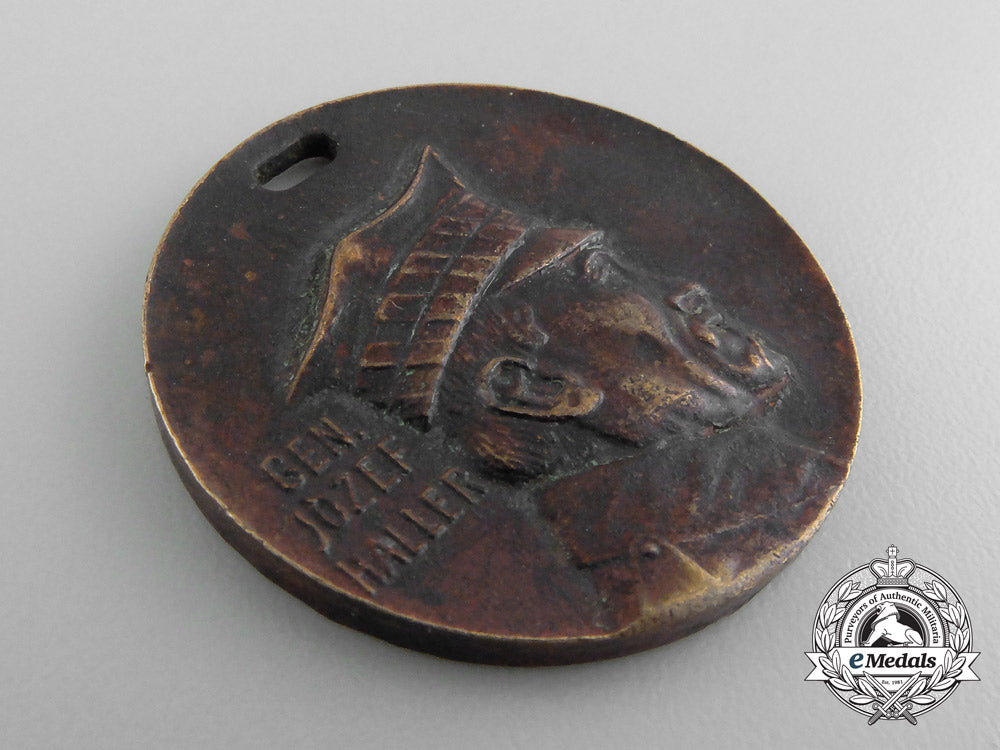
A 1923 Polish General Józef Haller Von Hallenburg Trip To America Medal
A 1923 Polish General Józef Haller Von Hallenburg Trip To America Medal
SKU: ITEM: EU12183
Current Bid:
Your Max Bid:
Bid History:
Time Remaining:
Couldn't load pickup availability
Shipping Details
Shipping Details
eMedals offers rapid domestic and international shipping. Orders received prior to 12:00pm (EST) will be shipped on the same business day.* Orders placed on Canadian Federal holidays will be dispatched the subsequent business day. Courier tracking numbers are provided for all shipments. All items purchased from eMedals can be returned for a full monetary refund or merchandise credit, providing the criteria presented in our Terms & Conditions are met. *Please note that the addition of a COA may impact dispatch time.
Shipping Details
eMedals offers rapid domestic and international shipping. Orders received prior to 12:00pm (EST) will be shipped on the same business day.* Orders placed on Canadian Federal holidays will be dispatched the subsequent business day. Courier tracking numbers are provided for all shipments. All items purchased from eMedals can be returned for a full monetary refund or merchandise credit, providing the criteria presented in our Terms & Conditions are met. *Please note that the addition of a COA may impact dispatch time.
Description
Description
Poland (Republic), United States. Lieutenant General Józef Haller von Hallenburg Trip to America for the Dedication of the Blue Army Monument in Chicago Commemorative Medal 1923: Bronze, obverse illustrating the right-facing bust of Lieutenant General Józef Haller von Hallenburg, inscribed "GEN. JÓZEF HALLER" to the left, reverse inscribed "PAMIATKA POBYTU GENERALA JÓZEFA HALLERA W AMERYCE 1923" with branches of laurel leaves and maker marked "WHITEHEAD & HOAG", 32 mm, slotted at the top for suspension, edge nicks, surface wear, near very fine.
Footnote: Józef Haller von Hallenburg (August 13, 1873 - June 4, 1960) was a Lieutenant General of the Polish Army, a legionary in the Polish Legions, harcmistrz (the highest Scouting instructor rank in Poland), the President of the Polish Scouting and Guiding Association (ZHP), and a political and social activist. He was the cousin of Stanisław Haller. Haller was born in Jurczyce. He studied at Vienna's Technical Military Academy and subsequently (1895–1906) served with the Austrian Army, resigning after reaching the rank of captain. He supported the paramilitary pro-independence Polish organization Sokół. In 1916, during the First World War, he became commander of the Second Brigade of the Polish Legion, in particular the units which fought against Russia on the Eastern Front. In 1918, in the aftermath of the "Charge at Rarańcza", as commander of the 2nd Polish Auxiliary Corps with the Austrian Army, Haller broke through the Austro-Russian front line to Ukraine, where he united his troops with Polish detachments which had left the Tsarist army. He protested the Treaty of Brest-Litovsk and continued to fight the Russians with his II Brigade of the Polish Legions (later, the 4th and 5th Rifle Divisions of the Polish II Corps). Under the pressure of the Germans, who after the Peace of Brest-Litovsk regarded the presence of Polish troops in Ukraine as illegal, and a fierce battle between Poles and Germans at Kaniów (May 10, 1918, with 2,500 casualties) his corps was interned, while the Brigadier himself managed to escape to Moscow. Subsequently, by the way of Murmansk, he arrived in France in July 1918, where on behalf of the Polish National Committee he created what was known as the Blue Army (from the colour of its French uniforms, also known as Haller's Army). For the next few months his army, allied to the Entente, would fight against Germany. In 1919, at the new army's head, he arrived in Poland and was dispatched to the Ukrainian front. In 1920, Haller seized Pomerania and entered Danzig (Gdańsk) in the name of Poland, and during the Polish-Soviet War he commanded an army of volunteers. He was also Inspector General of the Army and a member of the War Council. From 1920 to 1927, Haller was a deputy to the Sejm. After the election of Gabriel Narutowicz as President of the Republic in December 1922, Haller fell into disfavor. After the May Coup of 1926, he was ordered into retirement. He co-organized an opposition party, the "Front Morges." At the time of the Invasion of Poland in 1939, Haller was living abroad. From 1940 to 1943, he served as Minister of Education in Władysław Sikorski's government. After 1945, he settled in London as an exile and did not take active part in any émigré Polish political activities. In 1923 and again in 1933, the General travelled to the United States with a mission of support for veterans and disabled members of the Blue Army. Among the sites General Haller visited in 1923 was St. Hyacinth Basilicain Chicago's Polish Village, taking part in the dedication service of a monument dedicated to the Blue Army that still stands in the "Garden of Memory" next to the Basilica to the present day.
Description
Poland (Republic), United States. Lieutenant General Józef Haller von Hallenburg Trip to America for the Dedication of the Blue Army Monument in Chicago Commemorative Medal 1923: Bronze, obverse illustrating the right-facing bust of Lieutenant General Józef Haller von Hallenburg, inscribed "GEN. JÓZEF HALLER" to the left, reverse inscribed "PAMIATKA POBYTU GENERALA JÓZEFA HALLERA W AMERYCE 1923" with branches of laurel leaves and maker marked "WHITEHEAD & HOAG", 32 mm, slotted at the top for suspension, edge nicks, surface wear, near very fine.
Footnote: Józef Haller von Hallenburg (August 13, 1873 - June 4, 1960) was a Lieutenant General of the Polish Army, a legionary in the Polish Legions, harcmistrz (the highest Scouting instructor rank in Poland), the President of the Polish Scouting and Guiding Association (ZHP), and a political and social activist. He was the cousin of Stanisław Haller. Haller was born in Jurczyce. He studied at Vienna's Technical Military Academy and subsequently (1895–1906) served with the Austrian Army, resigning after reaching the rank of captain. He supported the paramilitary pro-independence Polish organization Sokół. In 1916, during the First World War, he became commander of the Second Brigade of the Polish Legion, in particular the units which fought against Russia on the Eastern Front. In 1918, in the aftermath of the "Charge at Rarańcza", as commander of the 2nd Polish Auxiliary Corps with the Austrian Army, Haller broke through the Austro-Russian front line to Ukraine, where he united his troops with Polish detachments which had left the Tsarist army. He protested the Treaty of Brest-Litovsk and continued to fight the Russians with his II Brigade of the Polish Legions (later, the 4th and 5th Rifle Divisions of the Polish II Corps). Under the pressure of the Germans, who after the Peace of Brest-Litovsk regarded the presence of Polish troops in Ukraine as illegal, and a fierce battle between Poles and Germans at Kaniów (May 10, 1918, with 2,500 casualties) his corps was interned, while the Brigadier himself managed to escape to Moscow. Subsequently, by the way of Murmansk, he arrived in France in July 1918, where on behalf of the Polish National Committee he created what was known as the Blue Army (from the colour of its French uniforms, also known as Haller's Army). For the next few months his army, allied to the Entente, would fight against Germany. In 1919, at the new army's head, he arrived in Poland and was dispatched to the Ukrainian front. In 1920, Haller seized Pomerania and entered Danzig (Gdańsk) in the name of Poland, and during the Polish-Soviet War he commanded an army of volunteers. He was also Inspector General of the Army and a member of the War Council. From 1920 to 1927, Haller was a deputy to the Sejm. After the election of Gabriel Narutowicz as President of the Republic in December 1922, Haller fell into disfavor. After the May Coup of 1926, he was ordered into retirement. He co-organized an opposition party, the "Front Morges." At the time of the Invasion of Poland in 1939, Haller was living abroad. From 1940 to 1943, he served as Minister of Education in Władysław Sikorski's government. After 1945, he settled in London as an exile and did not take active part in any émigré Polish political activities. In 1923 and again in 1933, the General travelled to the United States with a mission of support for veterans and disabled members of the Blue Army. Among the sites General Haller visited in 1923 was St. Hyacinth Basilicain Chicago's Polish Village, taking part in the dedication service of a monument dedicated to the Blue Army that still stands in the "Garden of Memory" next to the Basilica to the present day.
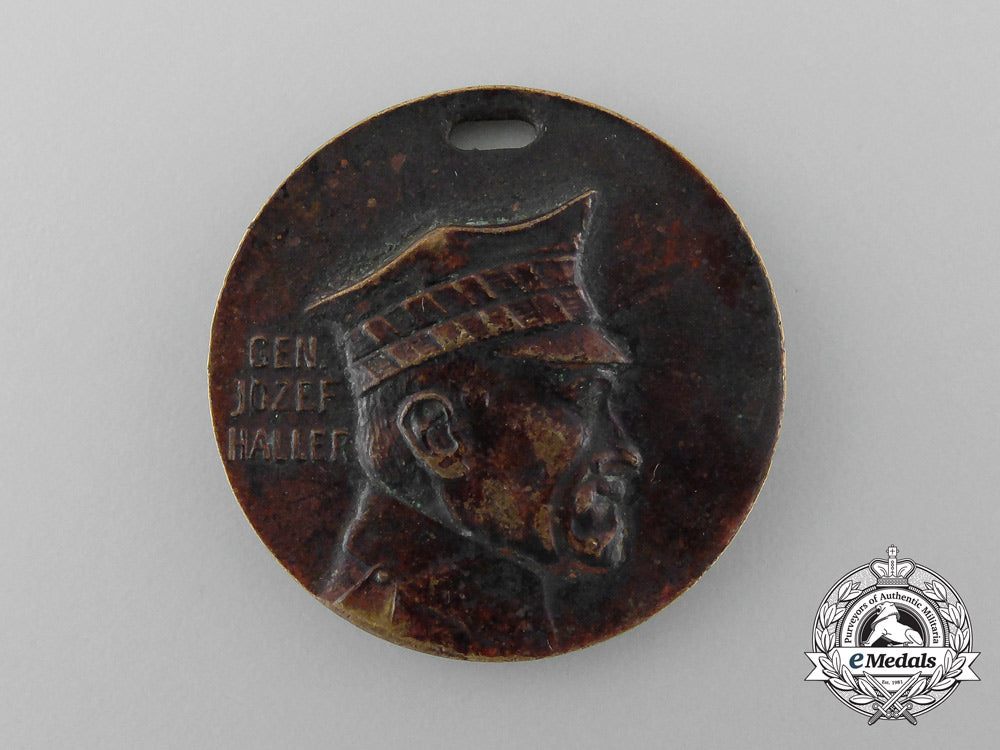
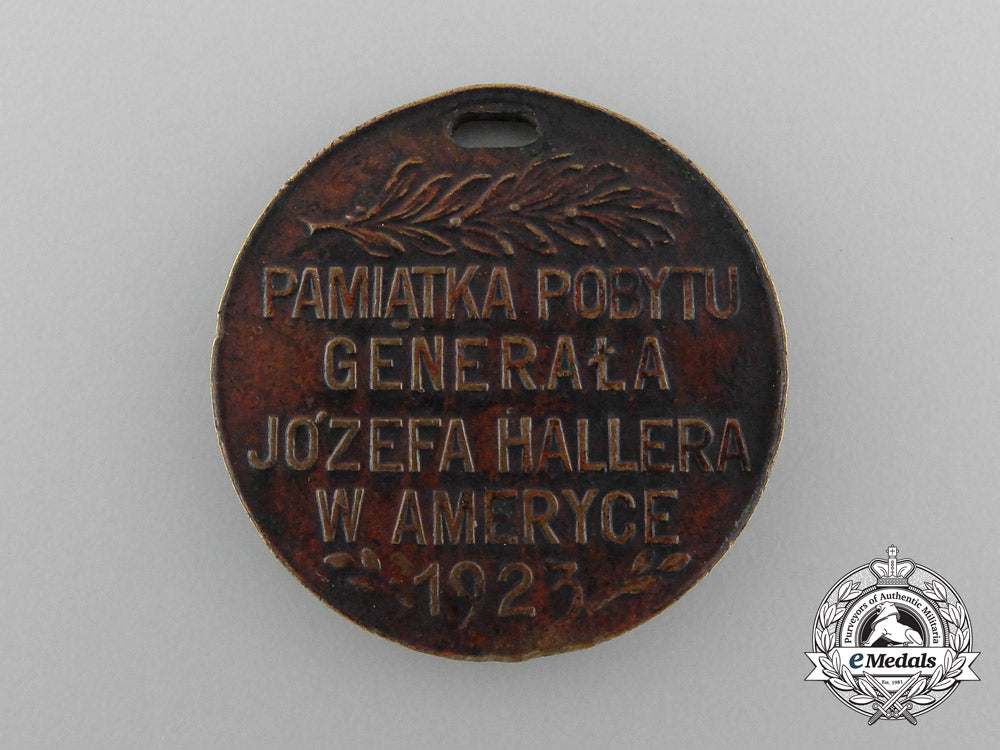
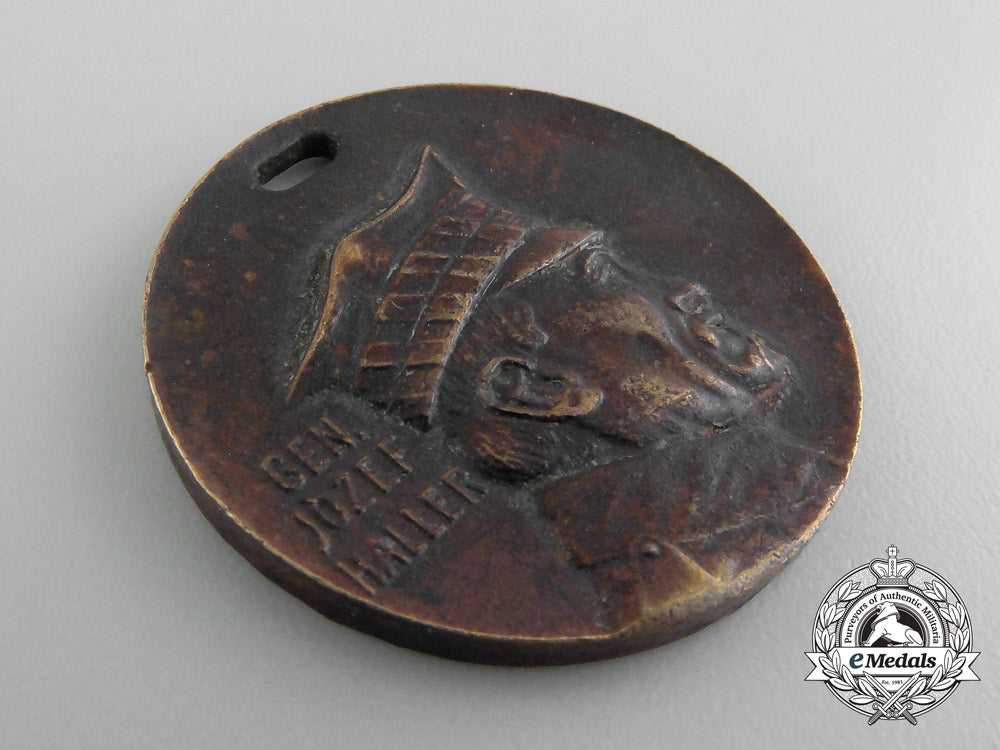
You May Also Like
Spain, Spanish State. A Medal of the Russian Campaign, with Case, by Diez y Campañia
EU24085
Austria-Hungary, Empire. A Rare Sturmbataillon 106 Personnel Badge
EU24086
France, Free Country Of Burgundy. An Order Of Saint George Of Burgundy, Embroidered Breast Star, C. 1925
EU19677
Russia, Imperial. A Russo-Japanese War Period Group Photograph, c. 1904–1910
EU23370
Finland, Republic. An Order Of The Cross Of Liberty, IV Class 1941, Military Division
EU24024
-
Spain, Spanish State. A Medal of the Russian Campaign, with Case, by Diez y Campañia
EU24085
Add to CartRegular price $340 USDRegular price $0 USD Sale price $340 USDUnit price / per -
Austria-Hungary, Empire. A Rare Sturmbataillon 106 Personnel Badge
EU24086
Add to CartRegular price $675 USDRegular price $0 USD Sale price $675 USDUnit price / per -
France, Free Country Of Burgundy. An Order Of Saint George Of Burgundy, Embroidered Breast Star, C. 1925
EU19677
Add to CartRegular price $330 USDRegular price $0 USD Sale price $330 USDUnit price / per -
Russia, Imperial. A Russo-Japanese War Period Group Photograph, c. 1904–1910
EU23370
Add to CartRegular price $340 USDRegular price $0 USD Sale price $340 USDUnit price / per -
Finland, Republic. An Order Of The Cross Of Liberty, IV Class 1941, Military Division
EU24024
Add to CartRegular price $200 USDRegular price $0 USD Sale price $200 USDUnit price / per
Do you have a similar item you are interested in selling?
Please complete the form and our client care representatives will contact you.
Sell Item